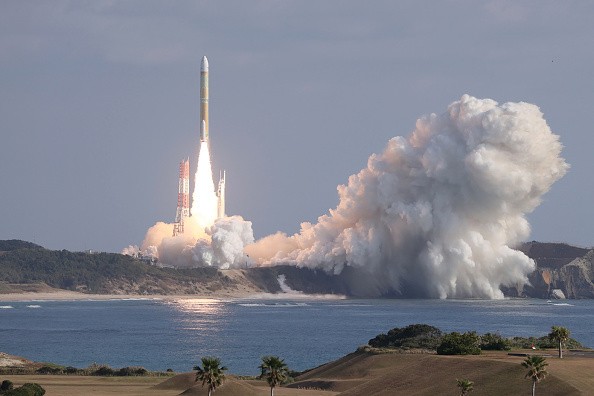The Advanced Land Observing Satellite-4 (ALOS-4) was successfully launched from Tanegashima Space Centre by Japan's much-awaited H3 rocket, although with a delay caused by bad weather.
July 1 at 12:06 p.m. Japan Standard Time (June 30 at 11:06 p.m. EDT) saw the launch. The rocket had made three attempts to lift off.

Unexpected Weather Delays the Launch
Rain and thunder postponed the launch scheduled for last weekend. The Japan Aerospace Exploration Agency (JAXA) declared on Friday that bad weather had caused the launch to be postponed until Monday.
The H3 rocket was developed in cooperation with Mitsubishi Heavy Industries and JAXA. Its planned Sunday launch must be postponed to ensure its efficacy and safety.
Waiting proved to be a crucial factor in successfully launching the sophisticated Earth monitoring satellite ALOS-4. Disaster response, mapping, and military operations monitoring-like missile launches-can all benefit from this satellite. The successor of ALOS 2 is ALOS-4. Its Japanese Defense Ministry-developed infrared sensor enables it to see across a wider area more clearly.
The Mission of the Advanced Land Observing Satellite-4
Launching the H3 rocket is a big step forward for Japan's attempts to explore space. This mission comes after a rough start for the H3.
Its first launch in March 2023 failed when the upper-stage engine didn't light, destroying the ALOS-3 satellite. However, the second flight in February 2024 restored faith in the H3's abilities. It safely reached orbit and deployed two small Earth-observation satellites and a mass simulator.
Japan's space program needs the ALOS-4 project more than anything else. The satellite uses synthetic aperture radar to take pictures no matter what the weather is like or what time of day it is.
This makes it a handy tool for constantly watching Earth. JAXA officials discussed how the satellite can take better, more explicit pictures and see more areas than its predecessors.
The successful launch of the ALOS-4 satellite shows how reliable the H3 rocket is and how much Japan wants to improve its space capabilities. The H3 will replace Japan's main medium-lift rocket, the H-2A, which has been used for more than 20 years but is no longer needed. The switch to the H3 is meant to cut launch costs in half while also making it possible to carry more goods.
JAXA and Mitsubishi Heavy Industries have worked hard to make the H3 a launch vehicle suitable for commercial use. Japan wants to have a stable and competitive space transportation system, which is important for the country's space program and security. The 57-meter (187-foot) rocket is meant to help reach that goal.
The ALOS-4 satellite will make a big difference in many areas, such as national defense, disaster management, and environmental tracking. It can take radar pictures day or night, no matter the weather, which makes it useful for monitoring disaster-stricken areas, woods, and sea ice. Thanks to the data that ALOS-4 collects, Japan will be better able to handle natural disasters and monitor environmental changes.
Launching the H3 rocket carrying the ALOS-4 satellite was a big step forward for Japan's space program. Despite problems in the past and delays caused by bad weather, this project sets the stage for future progress in space exploration and Earth observation. As Japan continues improving its space capabilities, the H3 rocket will be a vital part of its efforts to keep a solid and competitive position in space.
RELATED ARTICLE : Japan Seeks Help to Name Silicon-Based Asteroid Giant for Hayabusa2 Mission; JAXA Wants 'Non-offensive' Suggestions
Check out more news and information on Space in Science Times.










